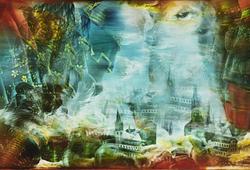Bord, huali. Kina, 1900-tal.
Med s.k. lotusblads-midja. Mått 48x60 cm. Höjd 70 cm.
Proveniens
Property of a private Swedish collector.
Utställningar
Compare with tables of this design in the Palace Museum, Beijing, illustrated in Hu Desheng, A Treasury of Ming & Qing Dynasty Palace Furniture, Beijing, 2007, vol. I, pl. 166.
Litteratur
Nancy Berliner discusses the original version of this table type in Beyond the Screen: Chinese Furniture of the 16th and 17th Centuries, Boston, 1996, pp. 134-135, cat. no. 22.
Övrig information
This design is interesting, the original version occurs in the late Ming period, and the abundance of carved decoration on these tables represents a clear departure from the clean and sober aesthetics more commonly associated with 17th century furniture, and demonstrates the co-existence of different furniture styles in this period.
The graceful curves of this piece, created by its undulated waist and the shaped aprons, and its decoration are imbued with a feminine quality. The long sides of the table are carved with a motif of two phoenix facing the sun (shuangfeng chaoyang), an omen for the arrival of enlightened men, while the short sides with a pair of birds perched on flowering branches. Wang Shixiang, op.cit., p. 281, suggests that the former share similarities with designs found on contemporary brocade, while the latter with polychrome porcelains of the Wanli reign (r. 1573-1620).




























































